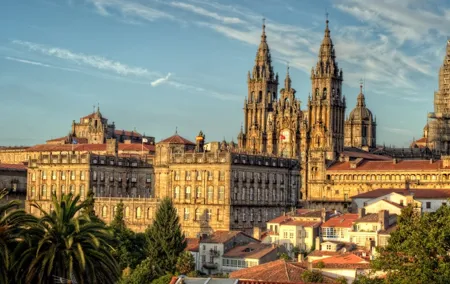The Alps are associated by everyone with picturesque meadows, vast valleys, rocky peaks covered in snow, colorful villages, and crystal-clear air. To witness the breathtaking landscapes and fully enjoy the natural beauty of the Alps, merely visiting one of the region's resorts is hardly enough. Experiencing the grandeur of the mountains and the unique local atmosphere is only possible during a hiking trip. Such tours allow you to visit uncharted corners that are inaccessible by car or public transport. One of the most scenic and popular hiking routes in the Alps is considered to be the circuit around Mont Blanc. Embarking on this hike, you can immerse yourself in nature and, to some extent, test your limits.
This tour serves as a grand finale, beginning and ending in the small town of Chamonix, France, which is a well-known ski resort. Throughout the hike, you will cover about 110 kilometers. The trek is designed to take ten days. This route is considered to be not too difficult, making it suitable even for beginners in hiking.

flickr / lemarquis34
First day: Chamonix (France)
The hike starts in the French town of Chamonix - a popular ski resort with a developed tourism infrastructure. Here, you can rest before the tour and purchase any necessary equipment. The resort hosts a plethora of specialized shops for hiking. Free time in Chamonix can be spent on the observation deck of the Brevent mountain, to the summit of which you'll be taken by a lift.
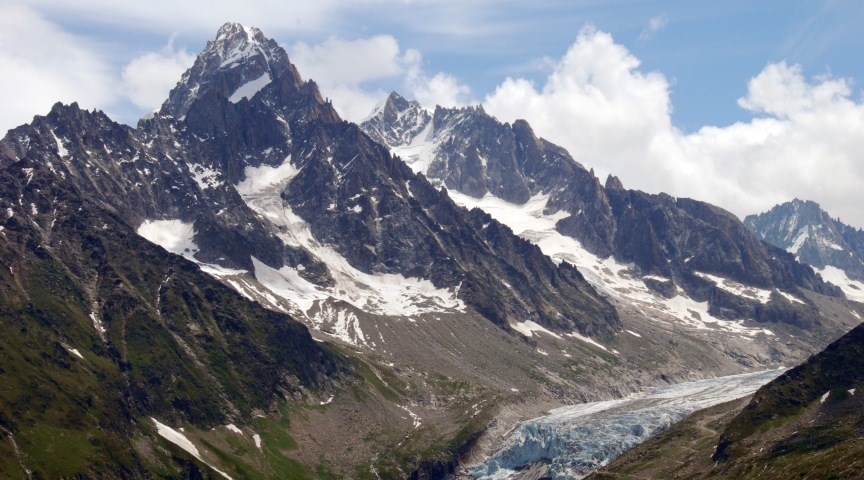
flickr / ianphilipb
Second day: Les Contamines-Montjoie
After spending the night in Chamonix, travelers typically move to the small village of Les Houches, from where the actual trek begins. On the second day, you need to ascend by cable car to the Bellevue pass at an altitude of 1,801 meters and pass under the Bionnassay glacier. The penultimate stop of the second day is the Col de Tricot pass at an altitude of 2,120 meters. In the evening, you can descend to the village of Les Contamines-Montjoie, where camping overnight is planned. You can cover about fifteen kilometers in a day.
Third day: Col du Bonhomme Pass
The third day of the hike involves covering a distance of twelve kilometers and gaining an altitude of up to 1,200 meters. The day's final destination is the Col du Bonhomme pass at an elevation of 2,329 meters. You can camp out in personal tents or stay in a local shelter if the air temperature is sufficiently low.
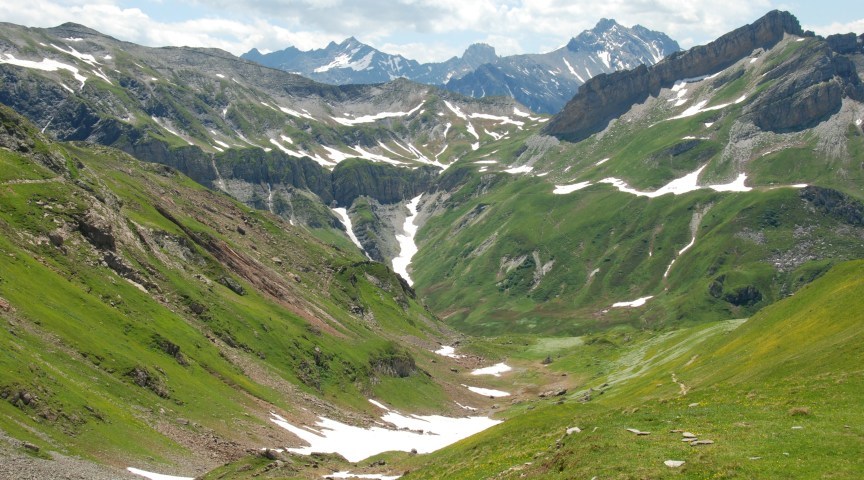
flickr / ianphilipb
Fourth day: La Ville-des-Glaciers
On the fourth day, you should cover about ten kilometers and descend to the picturesque alpine village of La Ville-des-Glaciers, near which, at an altitude of 2,393 meters, is the scenic Lac de Mya mountain lake. After that, you can head to the Mottets refuge, where there's the possibility to stay overnight.
Fifth day: Italy, crossing the pass
On the fifth day of your exciting trek through the Alps, you will cross the Col de la Seigne pass, which marks the border between France and Italy. On this day, you will be able to see the Lac de Combal mountain lake, one of the Mont Blanc glaciers (Miage), and the amazing Val Veny valley, where camping is located. The plan is to cover about sixteen kilometers in a day.
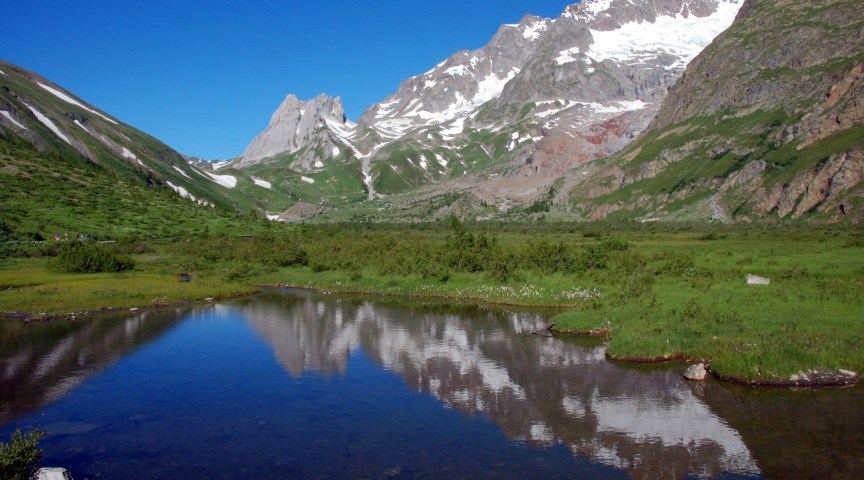
flickr / ianphilipb
Sixth day: Switzerland
The sixth day starts with a visit to the village of Courmayeur and a bus transfer to the Val Ferret valley. From here, you will proceed on foot to the Col de Grand Ferret pass, which borders Switzerland. You can camp overnight on the outskirts of the Swiss village of La Fouly. You'll cover fifteen kilometers on the sixth day.
Seventh day: Val Ferret Valley
You will experience one of the most picturesque sections of the journey. Descending along the turbulent mountain river, you will pass through fairy-tale alpine villages and mighty forests. An overnight stay is planned at a camping site near the village of Champex. You'll need to cover sixteen kilometers for the day.
Eighth day: Alpine glaciers
This is the most impressive and at the same time challenging section. You will have to ascend a narrow trail to the Glacier du Trient, which is about four kilometers long. In the evening, you should descend to the village of Trient, where you can stay overnight. The distance covered - fourteen kilometers.
Ninth day: France
On the ninth day of the hike, you will need to cross the Col de Balme pass, beyond which lies France. From the top of the pass, there is a wonderful view of the Alps and the Chamonix valley. The ninth day's overnight stay is at the camping site of the village of Le Tour. The distance covered - fifteen kilometers.
Tenth day: Finish. Chamonix
On the tenth day - the return to Chamonix. The hike comes to a close. You can congratulate yourself; you've looped around Mont Blanc, the highest mountain in the Alps!
Preparing for the tour
To ensure your journey goes smoothly, it's important to prepare properly. First and foremost, think about documents and tickets. To pass through the hiking trail across three European countries (France, Italy, Switzerland), you will need a Schengen multi-visa or a single-entry Schengen visa obtained at the French consulate.
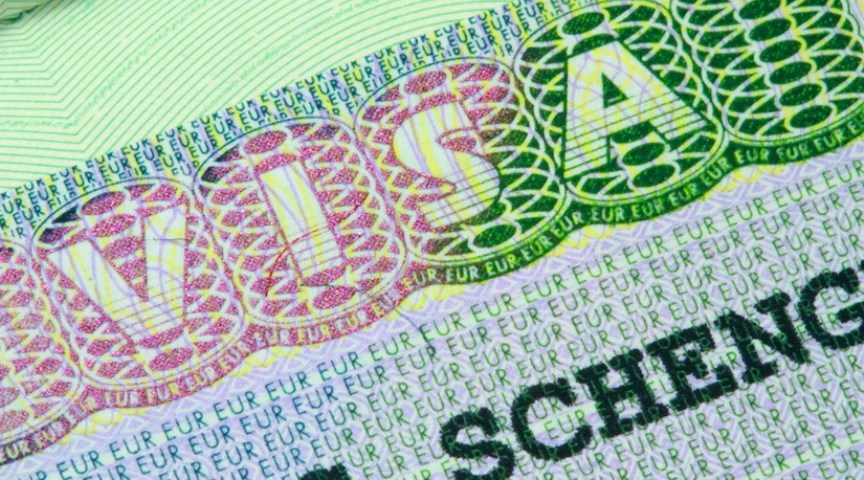
flickr / Sergey Tkachenko
As for the flight, it's most convenient to buy tickets to Geneva and take a direct bus to Chamonix from the airport. Another option is to purchase airline tickets to Milan and reach Chamonix by public transport (transfers may be required).
You will need specialized equipment for hiking. Most importantly, choose quality and comfortable shoes designed for mountain tours. You will also need thermal underwear, a waterproof jacket with a hood, a raincoat, trekking poles, sunglasses, headgear, a flashlight, a first aid kit with emergency medications, and any regular medications you may need. keep in mind that the weight of the backpack with things and provisions will be about 18-20 kilograms. Don't take anything unnecessary.
There's no need to stock up on food for the entire trip right away. Along the route, you will come across villages where you can refresh your supplies. You will cook food during the hike on gas burners. In no case should you light a fire in the mountains - it's strictly prohibited!
If you have the desire and opportunity to embark on such a hike around Mont Blanc, definitely do it, because there can be mountains beyond mountains!

flickr / ianphilipb

